| Umělec magazine 1998/8 >> Where’s Home of Mine? | List of all editions. | ||||||||||||
|
|||||||||||||
Where’s Home of Mine?Umělec magazine 1998/801.08.1998 Karel Císař | essay | en cs |
|||||||||||||
|
"His first ever published illustrated anecdote was printed in Youth Newspaper in 1905 when Josef Lada grew to only 17 years of age. Later on, perhaps at Christmas time of the same year, it was reprinted in The Greasy Cake, a collection of puzzles, tales and anecdotes. This ink drawing on paper dating back to 1904 was entitled It’s all ‚cos of the last name (Gamekeeper) and accompanied by the following text: “Father: ‘Don‘t you dare fussing about the game-keepers. Remember when Freddy next door got hurt by a gun shot two years ago.’ - Son: ‘What can you do if your last name is Rabbit!‘“ This seemingly naive punch line when father - a game-keeper himself - warns his son and his friend against his colleagues - game-keepers - represents an original clue for interpreting the work of Josef Lada and, above all, the complex relation between his work and his private life. The anecdote’s punch line is based on deceptive comparison of two opposing levels that we may tentatively define as the semantic level (represented by name) and the reality level (a human being). The game-keepers were shooting a rabbit but instead, they injured Freddy, the next-door neighbor. They intended to kill a name but ended up hurting a human being with a fatal, lethal name. This is anyway how the gamekeeper’s son perceives the situation refusing his father’s warning against game-keepers: since his last name is not Rabbit or Fox, there is no danger coming from game-keepers as they do not shoot people. The second possible interpretation of the anecdote is based on the presumption that its comical nature is not coming from the game-keepers’ activity but from the acts of the game-keeper’s son himself who misinterpreted Freddy’s injury in the above sense and by ignoring his father’s warning, he is running a risk of injury. This manner of reading the anecdote, however, weakens its effect as we are not laughing at the paradoxical connection of the unconnectable, instead we just ridicule stupidity of the game-keeper’s son. The drawing itself retains tension between the two opposing interpretations without giving a hint for an easy answer to which interpretation is the correct one. It does not prefer any of the above perspectives either: given the game-keepers reproachful gesture it might seem that he could be saying his warning at this very moment. However, taking in regard the fact that the drawing strategically hides mouths of both figures (the gamekeeper’s with his beard, the son’s by turning his head from the view), it leaves a space even for inverting the perspective which is coming along with the son’s reply in both of the interpretations. The drawing thus fails, using a non-discursive media of an image, to show utterly discursive narrative of the anecdote. It retains the discrepancy. This becomes obvious also through its double title which names the event two times from two different perspectives: first by saying what happened from the strong interpretation (It’s all ‚cos of the last name) and then by the character who is right along the lines of the weaker interpretation (Gamekeeper).
Reading the anecdote on the basis of Lada’s book Chronicles of My Life, we may, paradoxically, ascribe it certain biographical features. Lada seems to be rather skeptical to the name as a mere arbitrary sign and he longs for other names that would be more of symbols, linked in a determined way with what they indicate. When Lada’s mother went ill from cataract, a black board above her hospital bed read Hladová (her last name in Czech reads Ladová; Hladová means hungry). Lada himself considered this name created by cross-talk more appropriate than the real one “with regard to the quality of hospital food“, as he ironically notes in his memoirs. He then searched for the origins of his last name and found out that very few people in Bohemia bear such last name. In fact, there are only three similar names in the world: the first is the river Lada in Poland, second is the Siamese island of Po Lada in the Pacific Ocean and the third he found in an art magazine which pictured a distinguished gentleman and a signature below reading Marquis de Lada. This name also labels sawing machines, a creme, magazines, bras, and some foodstuffs. Furthermore, people didn’t call him by his real name. In his home village of Hrusice, he was called Josef Shoemaker, whereas neighboring village people called him by his father’s and grandfather’s nicknames Mlejneček of Hrusice. Just in school they called him Lada. Later when he attended the Applied Arts College and was forbidden to show his work publicly unless approved by the director, Lada was using a number of pseudonyms: L. Horký, K. Gregor, V. Konečný, L. Rozner, Celestýn, Kalhounek, Konečný, Ballada, Otto R. Hagem, Franta Křivý a J. Hrusický. The name in this case does possess the usual identification function, it represents the work itself. In his skepticism to arbitrary sign system, Lada went as far as selling his name. As he recollects in the Chronicle of My Life, he sold his nameday scheduled for March 19, or the Saint Joseph Day, to writer Jaroslav Hašek, author of the Good Soldier Svejk stories. Limitations of language are also documented by his memory of a puzzle he was given by his teen love Herminka: “’Guess what you future wife‘s name is going to be?’ I turned red, everything started spinning around me and green rye around me suddenly appeared red. I was so anxious I could not even speak - I felt like the chips went down. ‘You don‘t know, silly Joe? Why, Mrs. Lada, he, he, he.’“ (In fact, Czech name for Lada’s wife would be Ladová). Due to his skepticism to language and especially his own name, Lada prefers to choose a variety of names. By multiplying his name, however, his life only repeats a trend that was imprinted in his work from the very first reproduced drawing. The trend is nothing but reproduction, multiplication. His above analyzed anecdote dates back to 1904 but it only became art later on: by double reproduction - in a magazine and in a book - in 1905. Evolution of Lada’s artistic form thus headed towards its ideal reproducibility. In contrast to a unique, original piece of art, Lada places a mass product - at his time he is more modern than modern. Based on Walter Benjamin’s well-known thesis: by having a friendly attitude to the receiver of work, he updates the reproduced. He rids it of its aura calling for standardizing the unique. This standardization, however, does not only occur in Lada’s reproduced works but also in his earlier original pieces. They submit to their reproducibility and they conduct reproduction themselves. They are multiplied in never-ending series of Springs, Christmases, Water Sprites and Night-watches that are nothing but allegorical constellations of recurring elements. The trend of this standardization is apparent in a series of three pub fights by Lada: in the first one (Drag-out, 1929) only men fight in the middle of the hall while the remaining people at the pub keep on dancing, musicians are playing, the bartender pours beer and women are sitting by the furnace with kids on top of it watching everything from atop. The second one (Fight in a Pub, 1943) drags almost everyone into the fight except for two women praying on their knees and a fireman just getting ready to take some action. Fighting are not only adults but also grown-up kids, one of the musicians, the night-watch and the pub owner himself waving a cane in his hand. The central participants of the fight are almost identical to the previous picture with the only exception when one of them bears an open knife in his hand. The same is true for the third pub-fight picture (Fight, 1949) which differs by two of the fighters bearing knives. The firefighter was shifted to the other window symmetrically, spraying the fighters with water. Instead of two fighting teen-agers on top of the furnace, there are two older men in the same positions; only a grinder in a hand of one of them is now replaced by a roller in a hand of the other. Just one woman remains, taking the position similar to the 1929 version. In the place where a man was rolling up his sleeves in 1929 and 1943, another one is spitting into his palms. A man holding his hurting head was moved elsewhere while another man was dumped potatoes instead of coal on. Everything that does not serve to evoke an ideal fight was removed. Lada keeps on returning to his themes, concentrating on the individual elements which he gradually works up; in case he is not satisfied, he does not hesitate to return to their original appearance applying it recurrently and mechanically even within one picture, such as identical gestures of two couples in the 1949 Fight. The whole of the image is then assembled like a mosaic of disparate, mutually independent elements which may be reproduced in various constellations. Clearly, one of the most typical elements is “the Hrusice church“ which is shaping up its form in this way in Lada’s pictures. Its ubiquitous but it is never absolutely identical. Its orientation changes, the shape of the roof grows from a tent-like shape to an onion shape, similarly the shape of windows, surface of the surrounding walls, a lightening conductor appear and then disappear again. An ideal invariant, not depending on sensual reality, is not positively present; particular variants, however, represent its projection. In Lada’s case, it is thus impossible to speak of abstraction of the particular but rather of its idealization. The same may be said not only about construction of the individual elements of Lada’s composition but also of the typically solid contours that make up these elements. His unfinished sketches make it apparent that they are also based on multiplicity of preparational - try-out nervy lines whose point of intersection makes up the final uninterrupted line. Lada strategically chooses such an artistic process that matches modern life as he describes it in the Chronicle of My Life: “...when I now observe neighbors in my home village and surrounding places, I get a feeling that their characters have changed, as if they became regulated. It is especially the case of farmers. They are almost identical. They work the same, they drink the same max 3 beers in the evening and they don’t enjoy drag-outs that much any more. (...) Life in the countryside has become almost mechanical.“ Lada’s recurring “last look back“ at the things passed cannot be different. The trend we are following here is of double nature: on the one hand it is eccentric which Lada is using to give up his name in favor of multiple names after he failed to find its origin and resigned on representation of the original motif in favor of multiplying its variants. On the other hand, this same trend may be understood as centripetal: through multiple names, Lada not only moves away from his false name but simultaneously he comes closer to his real name and by multiplication of a motif’s variants he draws closer to its invariant. Both of the movements are typical for essential incompleteness or, perhaps, incompletableness. Moving away from the point of departure does not necessarily have to mean real vicinity to the goal and vice versa. If we are now to try and understand motivation for the tension that is typical for Lada’s life and work, we have to return to the very beginning of the Chronicle of My Life, to his earliest memories of his parents who are intentionally depicted by using symptoms of their diseases. Lada could not remember his father, who was forced “to start with a debt“ and make just enough “to pay off the interests“, until he fell ill. Although he died at the age of 57, his emphysema was so tormenting that he first considered himself dead 10 years before his actual death. His mother, on the other hand, “easily fell into depression for the tiniest detail and started crying“. Lada thought that she suffered from neurosis which he inherited from her, the symptoms “make a person either extremely happy or unexplainably sad, in some cases these two moods are changing very often and suddenly. (...) My happiness and melancholy are also changing very often just like with my mother in her older age.“ Lada was blaming both his eccentricity and deep melancholy to his inherited neurosis. “I don’t know why I so love quiet nights with moonshine. I spent long hours just watching the night sky with full moon sitting on a stone in front of our basement. The pale yellow moon with a legendary face of St. David attracted me so much with its mysterious beauty that I used to wish I was a bird so that I could freely fly through the sea of faraway lights.“ Both of these elements are present in his work as well. On the one hand there are the comical scenes, on the other you have grim and melancholic scenes most well-known of which are the night landscapes with a Night-watch. A tradition from Aristotle to Walter Benjamin has it that melancholy combines genius with insanity, intelligence and contemplation with depression and languor. Melancholic temper is ruled by the planet named after god Saturn whose holiday celebrated the “golden age“ before history started - on the longest night of the year, the summer solstice, December. Saturn’s melancholy, the Greek god of time ruling the seasons and everyone’s lifetime, is in Lada’s work represented by the Night-watch Franták who was, as Lada wrote in his memories, not only a time-announcer but also a grave-digger. It is the Night-watch whose life is not governed by earthly and human laws but by heavenly laws determined by the movement of stars. His time and local cyclic movement is the closest one to non-human heavenly mechanics. The Night-watch is also accompanied by his dog whose organism - similarly to the one of the melancholic - is ruled by spleen according to an old saying which is also a reason why a dog was one of the properties in Albrecht Dürer’s painting Melancholy I. This is also the case of a ball, a symbol of concentration in both spiritual and mechanical sense, which Lada used to represent the moon that is always in the full phase. Lada’s own melancholic temper is best proved by a oracular dream on July 9, 1913, as recorded in his memories, in which he foresaw death of his beloved painter Mikoláš Aleš which fulfilled the day after. If melancholy is in any way connected to some loss that a melancholic person is not able to admit, Lada’s melancholy is not coming from mere end of the world of his childhood but from the loss of the Saturn “golden age“ before the Babylon’s obfuscation of languages during which people enjoyed the cyclic movement of planets and symbolic „Adam’s“ language. What Lada refuses to reconcile with is nothing but his own humanity. “Melancholy betrays the world because of knowledge. Its persistent depression, however, saves the dead things by pulling them down to its contemplation, (...) similar to mosaic which, despite its dismemberment to vain little pieces, keeps its grandeur and does not have to be worried about its flight. Both are constituted of details and disparateness; it would be, however, difficult for them to edify on transcendental weight, be it a holy picture or truth.“ "
01.08.1998
Recommended articles
|
|||||||||||||
|
04.02.2020 10:17
Letošní 50. ročník Art Basel přilákal celkem 93 000 návštěvníků a sběratelů z 80 zemí světa. 290 prémiových galerií představilo umělecká díla od počátku 20. století až po současnost. Hlavní sektor přehlídky, tradičně v prvním patře výstavního prostoru, představil 232 předních galerií z celého světa nabízející umění nejvyšší kvality. Veletrh ukázal vzestupný trend prodeje prostřednictvím galerií jak soukromým sbírkám, tak i institucím. Kromě hlavního veletrhu stály za návštěvu i ty přidružené: Volta, Liste a Photo Basel, k tomu doprovodné programy a výstavy v místních institucích, které kvalitou daleko přesahují hranice města tj. Kunsthalle Basel, Kunstmuseum, Tinguely muzeum nebo Fondation Beyeler.
|







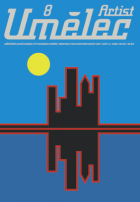
















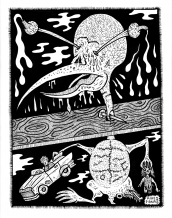
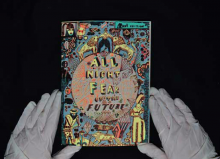
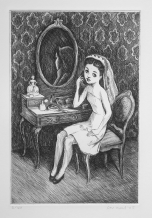
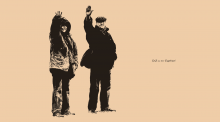


 New book by I.M.Jirous in English at our online bookshop.
New book by I.M.Jirous in English at our online bookshop.
Comments
There are currently no comments.Add new comment